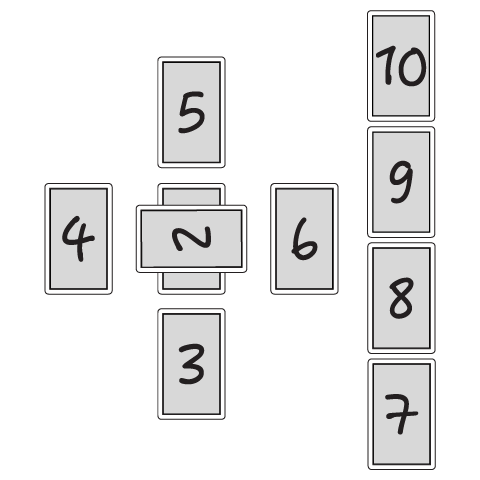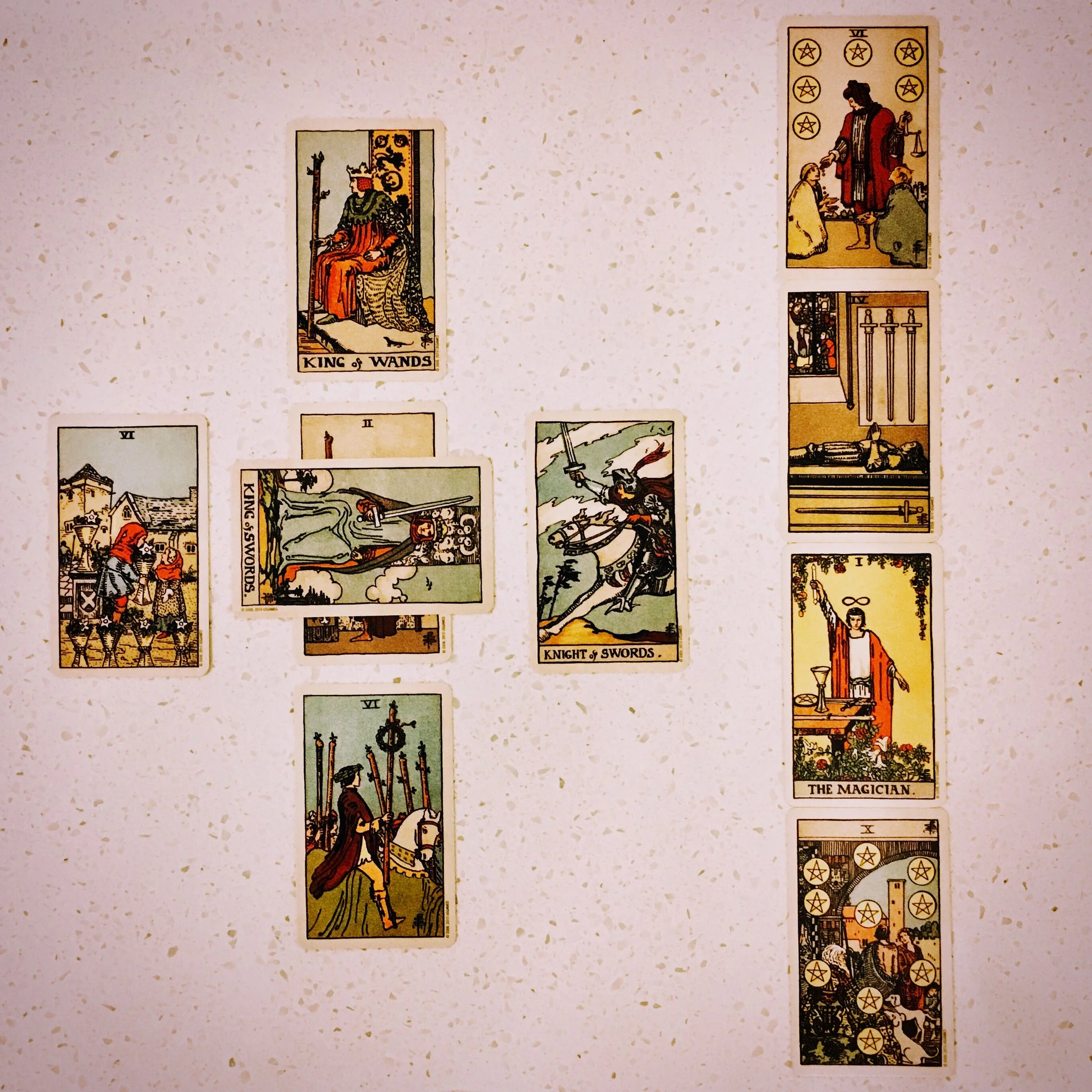The Celtic Cross
The Celtic Cross is a famous tarot spread, arguably the most famous spread since it’s included in the little white book (LWB) that comes with the most commonly owned deck of tarot cards, the Smith-Waite / Rider deck. By default, it’s what many tarot readers learn before they even understand the cards. It’s a large spread, and it covers a lot of facets of a general topic, which can be both overwhelming and too broad to get answers to specific questions. As a result, the spread gets a bit of a bad rep, but it’s not actually a bad spread. If you want to look at a specific question, there are definitely better types of readings, such as a one-card reading or three- or four-card reading if there are really multiple sub-questions. But if you want to understand a general topic or examine a longer-term concern (or series of events), then it can often be effective.
If you want to order a Celtic Cross reading from me, you can select it as an option with any tarot reading.
I’ve seen numerous ways to draw the cards and lay them out, so I just go with the one that has what I think of as an easy flow. It also allows for a spiral pattern in the center, which can be made part of reiki healing and Wiccan rituals, which I explored as a teen when first learning tarot. Since those early years, I’ve gone back and forth between using this “spiral” version (below) and another version that allows for previewing one of the two central four-card readings (or three-card readings, if you’re ignoring the “Obstacle”) before moving on to the remaining two cards of the central six.
The Celtic Cross (Spiral)
1. Current situation (center, covered)
2. Primary obstacle
3. Subconscious basis
4. Past events
5. Goals
6. Upcoming events
7. Approach
8. Environment
9. Hopes / Fears
10. Expected outcome
The alternative layout allows a “preview” of one of the two lines of the central cross before seeing the other of the two lines. The horizontal line of the cross offers a look at the timeline of events. The timeline of events can be abstracted and metaphorical, but it’s about things that have happened, are happening, and are likely to happen based on the current trajectory of events. The vertical line is about motivations, the subconscious drivers, the immediate plans and reactions, and the idealized goal state.
Which version of the Cross you choose depends on your focus. If for some reason you want to interpret the timeline of events before seeing the motivations, then draw “Past events” third and “Upcoming events” fourth. If, for some reason, you want to see the motivations without considering the timeline of events, then draw “Goals” fourth and “Past events” fifth. If you don’t care about reading the cards in such a strict way (I rarely do), then just do the spiral (or whatever pattern you prefer) before moving on to the final four cards.
The key point of practice with this decision, or any tarot-reading decision, is that you set your intentions either before you shuffle or while you’re shuffling. That way, you know what you’re asking of the deck. See “The Process” if you’re interested in how I prepare for a reading.
To the right is the Celtic Cross I drew before starting my “100 days of tarot” Instagram challenge. The challenge was not to read the tarot for 100 consecutive days—barring one or two “I’m a human, so anything can happen” days, that part was easy. The challenge was to post to Instagram for 100 consecutive days. I didn’t pose a specific question; I just thought about the broad topic of the challenge, as is fine with this spread. Subconsciously, I’m sure I was curious about what I could expect to get out of the experience because it seemed daunting and, honestly, a bit of a hassle.
I’m so glad that I did it though because it opened me up to new opportunities to share my interest and knowledge of tarot with others (to be clear, that sharing is a two-way street) and helped me expand some of my own more official learning, such as directing me to T. Susan Chang’s Tarot Correspondences, which I might not otherwise have found. It also connected me to fun new ways of thinking about the tarot and related interests, such as astrology. I probably never would have created a fun series of astrology charts ranging from the humorous and shallow to the deeply serious.
If you’re curious what I read in this Celtic Cross, see “Celtic Cross Example: 100 Days of Tarot.”


